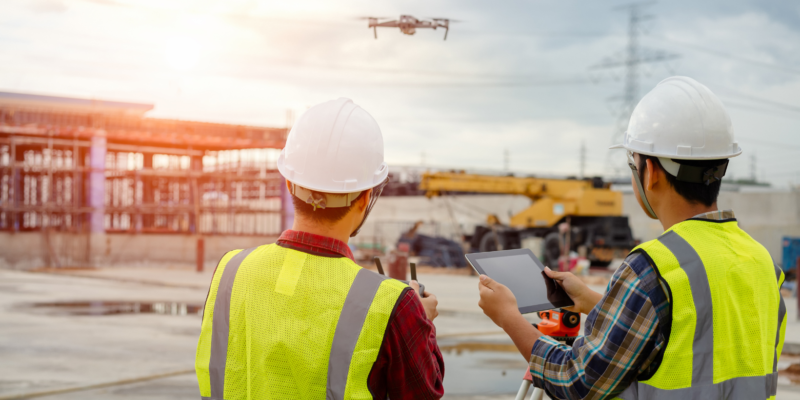Flying Across Industries
Over the last fews years, drones have become a common tool throughout many industries.
Real estate and vacation agencies regularly use them to take photos and videos of their available properties. They’re making a splash in the entertainment industry by capturing footage for documentaries, sporting events, and high-action scenes.
Just this year, Amazon started using drones to deliver packages lighter than 5lbs as part of their Prime Air service. With the increased commercial use of drones, it’s no surprise that they are becoming more prevalent in the construction industry as well.
Construction Drones
The construction industry as a whole has experienced a 239% growth in drone use since 2018. Their ability to easily and safely collect large quantities of data quickly has made them an integral part of many projects, from the initial planning stages all the way to completion. With their speed and efficiency, they save contractors both time and money.
Fixed Wing vs. Rotary Drones
There are two different types of drones commonly used in construction.
Fixed wing drones are modeled after airplanes and built for distance. They are typically used for mapping and scanning larger areas. However, due to the fixed status of their wings they can only go forward, so tight areas with obstacles are not a good fit.
For those tighter areas, most companies use rotary drones. These typically have a dual rotor design that allows these machines to hover up, down, and in place. They are used for photography, surveillance, aerial inspections, and structural scans.
High Level View
For large-scale construction projects, drones are also commonly used for land surveys and topographical mapping. They can typically survey vast swaths of land in 15-20 minutes to create highly accurate topographical maps. Teams can then combine these maps together to form 3D models, which are used for analysis and project planning.
The best part? By easily spotting terrain challenges and design flaws early in the planning process, crews can change design plans ahead of time instead of trying to fix them in the moment. This saves both time and money and ends up being 20 times less expensive than traditional surveillance and mapping processes.
Security from the Sky
Similarly, drones can be used to quickly and easily monitor equipment on a large job site, making sure it is where it needs to be, when it needs to be there. If it’s a rented piece of equipment that should no longer be on site, you’ll be able to identify and return it quickly, avoiding additional charges. They can also be used for safety, ensuring secure equipment, and preventing unauthorized access on the jobsite.
Improved Communications
Drones are also being used to help improve communications, both with clients and other members of the construction team. By providing aerial views of projects, clients get a real-time view of what you are doing and how far along you are on the project. And by sending collected data to connected software, owners, engineers, design teams and workers are updated in real time. This provides a paper trail for future use, allowing the whole team to work together to catch any potential mistakes or design flaws quickly.
Safety Watch
Drones are also contributing to increased safety on job sites. They can be used to make hard-to-reach measurements without the need for unsteady platforms. This reduces the fall risk for workers, who can operate drones from the safety of the ground.
Similarly, many companies have started using them for building and property inspection. Instead of using a team of surveyors, heavy machinery and scaffolding, drones are flown around the building or job site to take high resolution images that are later analyzed. They also have thermal sensors that can detect electrical issues, cold spots and heat leaks before they become a problem.
While drone technology is still developing, the increased safety, efficiency, and monetary benefits for workers, project managers and clients are very compelling. We can’t wait to see how this technology will continue to revolutionize the construction industry!

